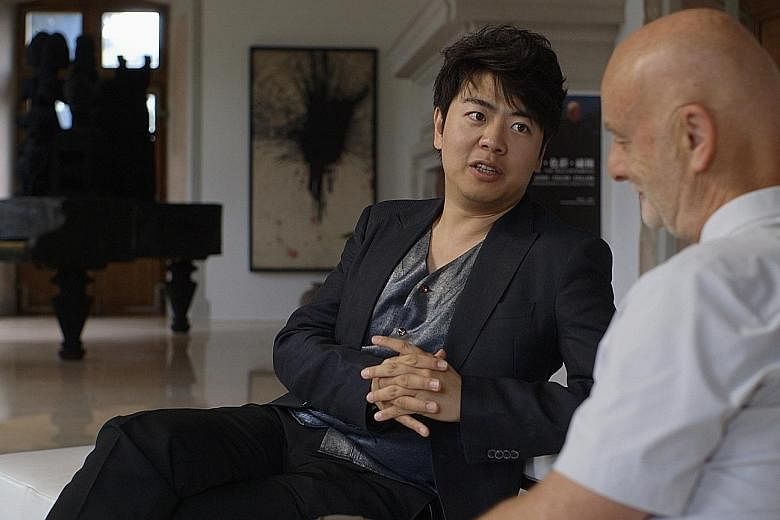Contemporary art from China burst onto the world scene in the 1990s and the craze does not seem to have dimmed. Recently, a piece by Zeng Fanzhi, The Last Supper, set a record for Asian art when it sold for US$23 million (S$32 million).
Zeng is one of several artists featured in the documentary, The Chinese Lives Of Uli Sigg (NC16, 93 minutes, 2016), about the man considered to be the world's foremost collector of contemporary Chinese art.
The film's director, Michael Schindhelm, 56, credits Sigg, 71, with two achievements: being among the first Westerners to see that modern Chinese art was as good as anything from elsewhere in the world, and being instrumental in popularising it in the West.
His film is part of the 27th edition of the European Union Film Festival, which opens on May 11.
-
BOOK IT / EUROPEAN UNION FILM FESTIVAL
-
WHERE: National Gallery Singapore, 1 Saint Andrew's Road
WHEN: May 11 to 21
ADMISSION: $11
INFO: For schedule and bookings, go to euff.sg
Schindhelm says: "When he started collecting, in China, there were no galleries, no museums for contemporary art, no curators, no journalists or magazines. It was all underground."
He says he wanted the film to reflect how Mr Sigg's story is one that is tied to the rise of China, both economically and as a source of global cultural power, or soft power.
Mr Sigg, a Swiss national, is blessed with "an eye for art", having come from a family of collectors.
In 1980, he was vice-president of a joint venture between his company, the elevator and escalator firm Schindler, and a Chinese company, in one of the first Western ventures in the communist nation, then opening up its economy.
In the 1990s, as Swiss ambassador to China, he collected art and today has more than 2,000 pieces.
"He collected as a philanthropist," says Schindhelm.
In June 2012, Mr Sigg donated most of his Chinese contemporary art holdings to the M+, a museum for visual culture due to open in Hong Kong in 2019.
The Sigg collection includes works from famous names such as activist-artist Ai Weiwei, who is featured in the documentary, along with pianist Lang Lang and artists Fang Lijun and Wang Guangyi.
Both Mr Sigg and Schindhelm will be present at the screening of the film on May 16 for an audience discussion.
Schindhelm is a German film- maker, writer, theatre director and art researcher based in Singapore for regional projects.
One thing to note about Mr Sigg, Schindhelm says, is that he often collected art that he might not personally enjoy, but which he knew was of standard.
"He helped create an art award in China and that became an important tool for finding the most innovative artists. He invited curators from the West and China to join the jury. The debates the jury had over the entries became a kind of informal academy about the quality of the art," says the film- maker.
Mr Sigg would then buy art based on the appraisals given by the jury.
The buzz he helped create about Chinese art around the world had one consequence: It piqued the interest of the new class of Chinese billionaires, who soon began buying it, causing a surge in prices.
"After Chinese artists were featured for the first time at the Venice Biennale in 1999, there was such a hype around them that he wasn't able to acquire them anymore. He was a victim of his own success," Schindhelm says.
Correction note: This story has been edited to clarify Mr Sigg had donated most of his Chinese contemporary art holdings to the M+ in 2012.


